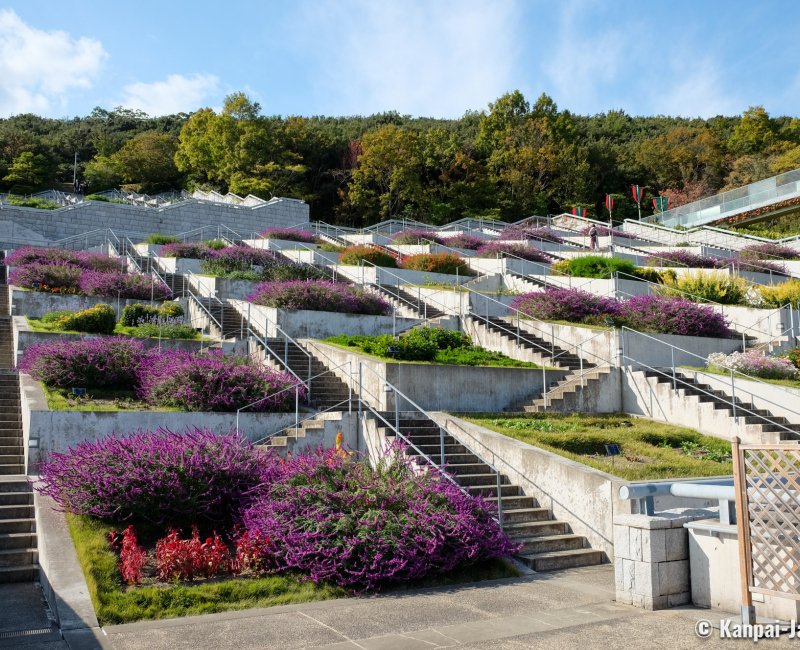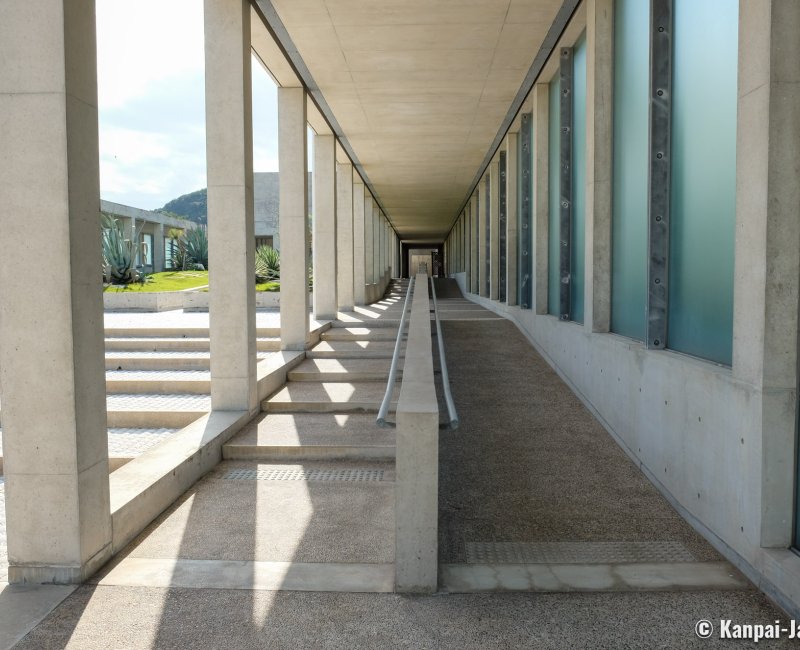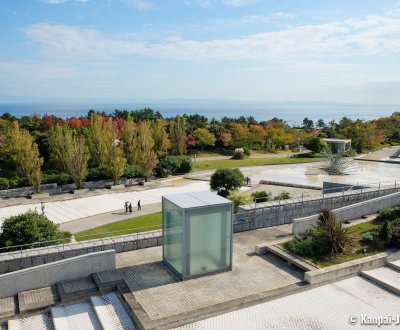Awaji Yumebutai
The Architectural Memorial by Tadao Ando
Awaji Yumebutai is an architectural complex designed by Tadao Ando, located in Akashi Kaikyo National Government Park, at the north-eastern end of Awaji-shima island, in Hyogo prefecture. Built to commemorate the Great Hanshin-Awaji Earthquake that hit Kobe’s area in 1995, it encompasses several concrete modern constructions, including a conference center, a hotel, an open-air theater as well as the famous Hyakudan-en garden.
On January 17, 1995 at 5:46 a.m., the north of Awaji island was at the epicenter of the magnitude 7 Great Hanshin-Awaji Earthquake. Kobe’s residential areas were particularly impacted with fires 🔥 destroying their wooden houses. The tragic event caused more than 6,400 deaths and 43,700 people were injured. The disaster was the biggest to occur in post-WWII Japan, until March 2011 and the Tohoku Earthquake and subsequent catastrophes.
Remembrance of this event makes a large part of the resilience process around Osaka Bay, especially through the winter light festival Kobe Luminarie and the Awaji Yumebutai architectural complex, whose name means "Awaji, a place for dreaming" in Japanese.
Famous architect Tadao Ando designed the first drafts of the construction project as soon as 1994, at the times with the intent of reconciling humankind and nature. After the earthquake, the symbolic significance of the Yumebutai, located near the epicenter, was obvious and it became a memorial. It celebrates the beauty of life, as opposed to the ugliness of death and devastation caused by 1995’s earthquake.
Inaugurated in 2000, the site displays an array of gardens and installations of modern architecture, dispatched over several levels, gently going down towards the coast of the Osaka Bay. Several buildings animate the landscape, such as:
- A conference center;
- The Grand Nikko Awaji Hotel with restaurants and the Marine Chapel; and,
- The open-air theater where shows are held all year round.

Hyakudan-en terrace gardens and botanical greenhouse
The natural setting is therefore an integral part of the architectural project, and visitors are constantly surrounded by nature, anywhere on the site. The wind, sun, water, vegetation and hilly landscapes of Awaji make a living decor into which the human constructions have to find their place and coexist harmoniously.
Among the several green spaces crossed by the visit path, 2 are particularly interesting:
- Hyakudan-en, or "hundred platforms garden," consists of 100 squares laid out in small 5×5 meters terraces, flowered according to the seasons. The slanting garden’s perfect geometry offers a panoramic view on Awaji Yumebutai, and Osaka Bay in the background;
- Hyogo prefectural Botanical Garden, or "Awaji Greenhouse", displays a large number of vegetal species under a large greenhouse. Note the admission fee can be quite expensive: up to ¥1,800 (~US$11.43) depending on the exhibition.
However, we don’t recommend climbing to the observatory of the promenade garden as the panorama is hidden by the trees, thus not very appealing.

A little-maintained pictorial and visual architecture
Awaji Yumebutai is mainly aimed at amateurs of contemporary design and more particularly of Tadao Ando’s works, creating a world of exposed concrete waiting to be covered by the vegetation. Volumes take up the space, and the whole site is criss-crossed by stairways and ramps.
Photographers will be delighted by the opportunity of taking nice shots of Yumebutai’s very pictorial architecture, with plays on:
- Shade and light;
- The buildings’ salient angles and circular forms;
- The depth of field allowed by the landscape opened on the sea and the mountain.
However, one should avoid looking at the installations in detail. The site, indeed, seems to be little maintained and is slowly loosing its original splendor. Cracks on the outer walls are noticeable and some fountains don’t work properly, such as the one paved with clam shells. It is almost regrettable that the admission is free, as collecting a fee would have contributed to maintaining the site as it truly deserves.

